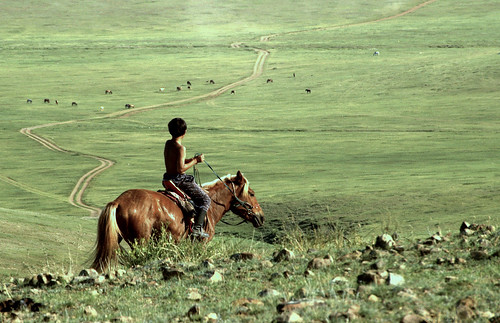January Reads at A Traveler's Library
January just flew by at A Traveler’s Library, with a big contest and the beginning of the Great American Road Trip, but I have five wonderful travel-stimulating books to tell you about.
Let’s start with that Road Trip.
I took a look back at Blue Highways by William Least Heat-Moon to kick off our road trip--in which we visit a different state each Wednesday with a book or a movie. And Kerry Dexter at Music Road will be suggesting music to go with the trip—not that I’m plugging my own show. Back to our regularly scheduled programming, I liked the way that Heat-Moon captured the regional dialects and the pride of place that every town and county show, no matter how shabby or dilapidated the place.
As a travel writer, I have come to the conclusion that there is no place that is not worth exploring. If at first glance it seems insignificant, you just need to adjust your vision, and listen to what the locals brag about. That makes road trips extremely interesting. Drive by doesn't work. It takes stopping along the road to hear those stories. The next book has the same message in a slightly different way.
Someone who wanted to meet more people and hear more stories in Paris, found that shopping provided the key. In Paris, Thad Carhart learns, it is not always easy for an American to get beyond the tourist’s view of the city. In the small book, The Piano Shop on the Left Bank, he introduces Paris and Parisians through his fascination with pianos.
The book is always as much about Parisians as it is about pianos. An American writer finds he has to rein in his American tendency to blurt out questions and rush acquaintanceship. Eventually he shares his life with a small group of people who gather around a piano and share a baguette and a bottle of wine at the end of the day.
While we are in France, let us think about one of the most famous French novelists. Jessie Voigts, of Wandering Educators, wrote a guest post about the book Flaubert’s Normandy. That stimulated me to re-read Madame Bovary, by Gustave Flaubert, and I made a discovery. The seduction scenes are not the only thing that can get you hot and bothered. Dedicated travelers can get turned on by a passage like this:
“Seen thus from above, the whole landscape looked immovable as a picture; the anchored ships were massed in one corner, the river curved round the foot of the green hills, and the isles, oblique in shape lay on the water like large, motionless, black fishes...The leafless trees on the boulevards made violet thickets in the midst of the houses, and the roofs, all shining with the rain, threw back unequal reflections..."
If that is not travel pornography, I don’t know what is. I want TO SEE THAT!! NOW!!

In a guest post by Anil Polat, he introduced us to the book, The Long Way Round, by Ewan McGregor and Charley Boorman based on the TV series of them traveling my motorcycle. Anil says that it was the passsages about Mongolia that made him want to travel slowly through that area of the world.
“We often complicate and glamorize travel without realizing it and the book is one that many travelers can identify with.These moments in travel are fleeting, short flashes we might be lucky to see on the longest trip. Traveling is cluttered in planning, dealing with reservations, and only small sections of the journey that take you back to when traveling was the way of life and the road was your friend, not your enemy. Long Way Round made me feel like those moments could be extended, just a little bit, driving across Mongolia on the modern equivalent of horseback,” Anil wrote.
And now we come to my favorite new book of the year. Okay, the year is only 1/12 gone, so maybe another really, really, really good one will come along. But until then, The Invisible Mountain by Carolina de Robertis pleased me on so many levels. It is written poetically. It follows three generations of women, instead of the usual male generational novel. But as a traveler, it was satisfying because it introduced me to the history and culture of Uruguay, a country I knew almost nothing about.
de Robertis includes the magical-realism of South and Central America, in the earlier sections of the book, but slips into more modern thought as the years pass. However she adds such poetic phrasing that sometimes whole pages become poetry. It is rare that a writer can pull off writing that appeals so strongly to our aesthetic appreciation and at the same time tell a coherent story. The Invisible Mountain is beautifully written but also a whopping good read. True and sexy and breath-takingly adventurous.
Hope to see you over at A Traveler’s Library, where we have both new and old travel books and movies, and visits to New England states coming up and for sure I’ll see you back here at Wandering Educators next month.
Vera Marie Badertscher is a travel writer who blogs about books and movies that belong in A Traveler’s Library. She's the Traveler's Library Editor for Wandering Educators.
Photograph from Flickr with Creative Commons License. Click photo to see more information about photographer.




















